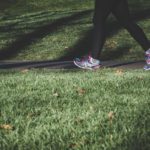 Knoxville Medical Group truly cares about the health and well-being of our patients. The epidemic of opioid abuse and devastation of lives has been felt in every community across the United States. This is why we do not prescribe opioids.
Knoxville Medical Group truly cares about the health and well-being of our patients. The epidemic of opioid abuse and devastation of lives has been felt in every community across the United States. This is why we do not prescribe opioids.
There are other ways to effectively manage chronic pain without prescription narcotics. There are new medications available we will prescribe to help those who are addicted to narcotics.
Alternative Treatments for Pain Management
Research shows these therapies can ease discomfort and manage pain. For more information visit the National Center for Complementary and Alternative Medicine.
Movement-Based Therapies
• Physical therapy: Specialized movements to strengthen weakened areas of the body, often through resistance training
• Yoga: An Indian practice of meditative stretching and posing
• Pilates: A resistance regimen that strengthens core muscles
• Tai chi: A slow, flowing Chinese practice that improves balance
• Feldenkrais: A therapy that builds efficiency of movement
Nutritional and Herbal Remedies
Food choices and dietary supplements (ask your doctor before using supplements) can relieve discomfort and effectively manage pain by boosting the body’s natural immunity, reducing pain-causing inflammation, soothing pain, and decreasing insomnia.
• Anti-inflammatory diet: A Mediterranean eating pattern high in whole grains, fresh fruits, leafy vegetables, fish, and olive oil
• Omega-3 fatty acids: Nutrients abundant in fish oil and flaxseed that reduce inflammation in the body
• Ginger: A root that inhibits pain-causing molecules
• Turmeric: A spice that reduces inflammation
• MSM: Methylsulfonylmethane, a naturally occurring nutrient that helps build bone and cartilage
Mind-Body Medicine
Using the powers of the mind to produce changes in the body to reduce stressful (and, hence, pain-inducing) emotions such as panic and fear, and by refocusing attention on subjects other than pain.
• Meditation: Focusing the mind on something specific (such as breathing or repeating a word or phrase) to quiet it
• Guided imagery: Visualizing a particular outcome or scenario with the goal of mentally changing one’s physical reality
• Biofeedback: With a special machine, becoming alert to body processes, such as muscle tightening, to learn to control them
• Relaxation: Releasing tension in the body through exercises such as controlled breathing
Energy Healing
 Manipulating the electrical energy—called chi in Chinese medicine—emitted by the body’s nervous system. By relaxing the body and the mind, distracting the nervous system, producing natural painkillers, activating natural pleasure centers, and manipulating chi.
Manipulating the electrical energy—called chi in Chinese medicine—emitted by the body’s nervous system. By relaxing the body and the mind, distracting the nervous system, producing natural painkillers, activating natural pleasure centers, and manipulating chi.
• Acupuncture: The insertion of hair-thin needles into points along the body’s meridians, or energetic pathways, to stimulate the flow of energy throughout the body; proven helpful for post-surgical pain and dental pain, among other types
• Acupressure: Finger pressure applied to points along the meridians, to balance and increase the flow of energy
• Chigong: Very slow, gentle physical movements, similar to tai chi, that cleanse the body and circulate chi
• Reiki: Moving a practitioner’s hands over the energy fields of the client’s body to increase energy flow and restore balance
Physical Manipulation
Hands-on massage or movement of painful areas. By restoring mobility, improving circulation, decreasing blood pressure, and relieving stress
• Massage: The manipulation of tissue to relax clumps of knotted muscle fiber, increase circulation, and release patterns of chronic tension
• Chiropractic: Physically moving vertebrae or other joints into proper alignment, to relieve stress
• Osteopathy: Realigning vertebrae, ribs, and other joints, as with chiropractic
Lifestyle Changes
Developing healthy habits at home and work. By strengthening the immune system and enhancing well-being, and by reframing one’s relationship with experience of chronic pain.
• Sleep hygiene: Creating an optimal sleep environment to get deep, restorative rest; strategies include establishing a regular sleep-and-wake schedule and minimizing light and noise.
• Positive work environment: Having a comfortable workspace and control over one’s activities to reduce stress and contribute to the sense of mastery over pain.
• Healthy relationships: Nurturing honest and supportive friendships and family ties to ease the anxiety that exacerbates pain.
• Exercise: Regular activity to build strength and lower stress.
